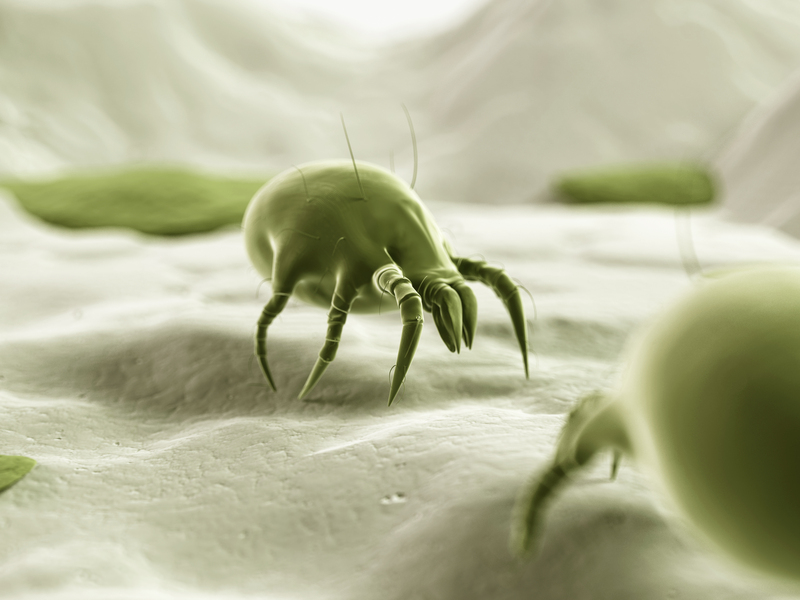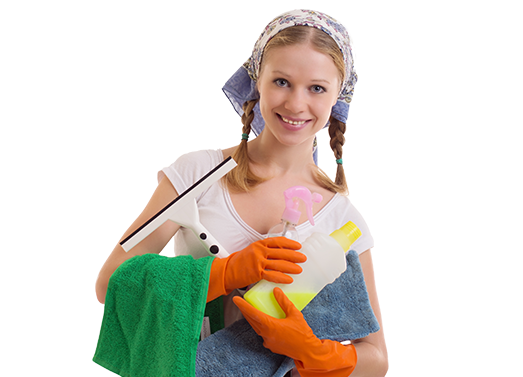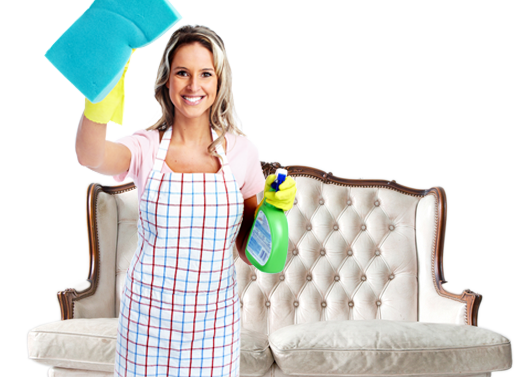Uncover the Best Practices for Stovetop Burnt Residue Removal
Posted on 26/05/2025
Uncover the Best Practices for Stovetop Burnt Residue Removal
Having a spotless kitchen is a matter of pride for many homeowners, but stubborn stovetop burnt residue can make even the most diligent cleaner feel defeated. Over time, stains, scorched marks, and charred gunk accumulate on gas burners or electric glass tops, affecting the aesthetic and functionality of your cooktop. In this comprehensive guide, we'll unveil tried-and-true methods, clever hacks, and best practices for stovetop burnt residue removal. Whether you have a gas, glass, induction, or coil stovetop, these solutions will restore its shine and maximize your kitchen hygiene.

Why Removing Burnt Residue from Your Stovetop Is Essential
- Improves Hygiene: Burnt gunk harbors bacteria and odors, compromising your kitchen's cleanliness.
- Preserves Appliance Life: Regular cleaning prevents corrosive damage and extends the lifespan of your stove.
- Ensures Even Cooking: Burnt residue can block burners, reducing efficiency and compromising cooking performance.
- Enhances Appearance: A sparkling stove top is visually appealing and welcoming.
Ongoing stove maintenance ensures your kitchen remains a healthy, inviting environment for cooking and gathering.
Understanding Your Stovetop - Before You Start
Before tackling burnt messes, it's important to understand your stove's surface. Cleaning methods differ based on whether you own a glass top stove, ceramic surface, gas cooktop, or electric coil stove. Consult your manufacturer's manual if you're unsure about safe products for your appliance.
Types of Stovetop Surfaces:
- Glass or Ceramic: Sleek but sensitive to abrasives.
- Gas: Features removable burners that collect oily buildup.
- Induction: Requires safe, gentle cleaning agents due to sensitive electronics beneath the top.
- Electric Coil: Tougher but may require coil removal for a deep clean.
What Causes Stovetop Burnt Residue?
The primary offenders are food spills, grease splatters, and accidental boil-overs. When exposed to continued heating, these residues carbonize, creating sticky or crusty patches that traditional wiping can't eradicate.
- Starch-based spills (e.g., potatoes, rice, pasta water) leave challenging stains.
- Sugar spills (especially syrups or jams) caramelize, hardening into a glass-like crust.
- Greasy foods can splatter and solidify into tar-like residues.
Addressing stovetop burnt residue removal promptly minimizes damage and makes the cleaning process much easier.
Essential Tools and Ingredients for Stovetop Cleaning
Keep these handy cleaning tools and supplies in your kitchen arsenal:
- Baking soda (natural abrasive and deodorizer)
- White distilled vinegar (cuts grease and dissolves mineral stains)
- Lemon juice (natural degreaser and freshener)
- Soft cloths or microfiber towels (avoid scratching delicate surfaces)
- Razor blade scraper (for glass stovetop burnt residue removal)
- Nylon scrubbing pad or non-abrasive sponge (safe for most surfaces)
- Dish soap
- Old toothbrush (for tight spots)
- Protective gloves
If store-bought cleaners are necessary, choose stovetop specific cleaners free from harsh abrasives and bleach.
Step-by-Step: Best Practices for Stovetop Burnt Residue Removal
Step 1: Ensure Safety First
- Turn off all burners and disconnect electric stovetops from the power supply.
- Allow the surface to cool completely--attempting to clean a hot stove may cause burns or cracks (especially on glass).
Step 2: Perform an Initial Wipe Down
- Remove all loose debris and crumbs with a dry towel or cloth.
- Detachable parts like burner caps and drip pans should be taken off and soaked in hot soapy water.
Step 3: Apply Cleaning Solution
- For light stains: Mix a few drops of dish soap with warm water and gently wipe the surface using a non-abrasive sponge.
- For stubborn burnt residue: Create a baking soda paste (3 parts baking soda to 1 part water). Spread the paste generously over the burnt area and let it sit for up to 30 minutes to loosen residue.
- Splash vinegar: Drizzle vinegar over the baking soda until it bubbles--this will help lift stubborn gunk.
Step 4: Gentle Scrubbing and Lifting of Burnt-On Stains
- Use a nylon pad or soft sponge to scrub in circular motions. For glass or ceramic, use very light pressure to avoid scratches.
- For metal grates or burner heads, use an old toothbrush to access nooks and crannies.
- If residue remains, repeat the baking soda-vinegar application or use a dedicated stovetop cleaner.
Step 5: Special Techniques for Glass and Ceramic Stovetops
Handle with care! Glass and ceramic cooktops require special attention:
- For hardened, glassy residue, gently use a razor blade scraper at a shallow angle, being careful not to scratch the surface. Always moisten the area before scraping.
- Apply proprietary glass cooktop cleaning creams for a streak-free, polished finish.
Step 6: Final Rinse and Buff
- Once the burnt residue is removed, wipe down with a clean, damp cloth to eliminate all traces of cleaning agents.
- Buff dry with a microfiber towel for a sparkling shine.
Natural Solutions for Stovetop Burnt Residue Removal
If you prefer eco-friendly cleaning methods, natural solutions can effectively tackle burnt-on food and stains without harsh chemicals:
- Lemon and Baking Soda: Sprinkle baking soda over the burnt area, then rub with half a lemon. The citric acid and mild abrasive work together to dissolve stubborn gunk.
- Vinegar Steam: Fill a pan with equal parts water and vinegar, set it on the stove, and bring to a boil. The steam will help loosen the residue, making it easier to wipe away once cooled.
- Salt Paste: Create a paste with water and coarse salt, then use it as a scouring agent for tough spots.
Tip: Always rinse thoroughly after using food-based cleaners to prevent attracting pests.
Expert-Recommended Products for Deep Cleaning
For especially stubborn or old burnt residue, commercial cleaners may be necessary. Highly rated, safe stovetop cleaners include:
- Weiman Glass Cook Top Cleaner & Polish - Excellent for glass and ceramic surfaces.
- Bar Keepers Friend - Effective on stainless steel and some glass surfaces.
- Affresh Cooktop Cleaning Kit - Includes cleaning pads and a non-abrasive scrapper for tough jobs.
Always follow the manufacturer's directions and wear gloves to protect your skin.
Pro Tips for Different Stovetop Types
Gas Stovetops
- Remove burner caps, grates, and drip pans for soaking and thorough cleaning.
- Avoid letting water get into gas ports; use a toothpick to clear clogged jets if needed.
- For cast iron grates, scrub with a paste of baking soda and water, rinse, and dry thoroughly to prevent rusting.
Electric and Induction Cooktops
- Never submerge electrical components in water.
- Clean coils by wiping with a damp cloth and allow to air dry completely before reconnecting.
- For induction tops, avoid abrasive pads and opt for cream-based cleaners.
Glass or Ceramic Stovetops
- Avoid harsh scouring pads, steel wool, or abrasive powders that could scratch the surface.
- Use razor scrapers gently; excessive force can crack the glass.
- Use a soft cloth to buff and shine after cleaning.
How to Prevent Burnt Residue on Your Stovetop
Maintaining a clean stovetop is much easier than tackling heavily burnt-on residue. Here are some best practices for stovetop care:
- Wipe spills immediately: Quickly cleaning up food and liquid spills prevents them from baking onto hot surfaces.
- Use splatter guards: Minimize oil splashes while frying or simmering sauces.
- Line drip pans: For gas and electric stoves, place aluminum liners under burners to catch spills.
- Regular deep cleaning: Schedule a thorough cleaning every one to two weeks, even if the surface looks clean.
- Avoid using dirty pots: Scrub cookware bottoms before use to keep residue from transferring to your stovetop.
What to Avoid When Cleaning Stovetop Burnt Residue
Using the wrong cleaning products or techniques can damage your stovetop. Here are some common cleaning mistakes to avoid:
- Don't use sharp knives or hard metal scrapers: These can scratch and permanently mark surfaces.
- Avoid abrasive powders on glass/ceramic: Can cloud and dull the finish.
- Never use bleach or ammonia together: Toxic fumes can result.
- Stay away from colored scrubbers: Dyes may transfer to your stove.
- Don't force drip pans/grates: Some parts must cool or soak before easy removal.

Frequently Asked Questions About Stovetop Burnt Residue Removal
How often should I clean my stove to prevent burnt residue buildup?
Daily light cleaning and weekly deep cleaning are recommended for best results.
Can I use oven cleaner on my stovetop?
Generally, no--oven cleaners can be too harsh and may damage sensitive finishes or discolor glass tops. Opt for stovetop-specific products instead.
Is vinegar safe for all stove surfaces?
White vinegar is generally safe but can etch some natural stones (like marble backsplashes) and might not be suitable for all electronic induction tops. Spot test first.
How do I remove burnt sugar from my stovetop?
Use a warm, damp cloth to soften the area, apply baking soda paste, and let sit before gently scraping. Repeat as needed.
Conclusion: Master Burnt Residue Removal for a Sparkling Stovetop
A clean stovetop not only keeps your kitchen looking great but also helps maintain a healthy and enjoyable cooking experience. By following these best practices for stovetop burnt residue removal--from using safe, natural solutions like baking soda and vinegar to knowing when to apply specialized cleaners--you'll keep your range in top condition for years to come.
Consistency is key: Quick action and regular maintenance prevent tough messes before they start. If you've found these tips helpful in restoring your stove's original luster, share them with friends and family so everyone can enjoy confidence and pride in their kitchen.
Shine on, and happy cleaning!



